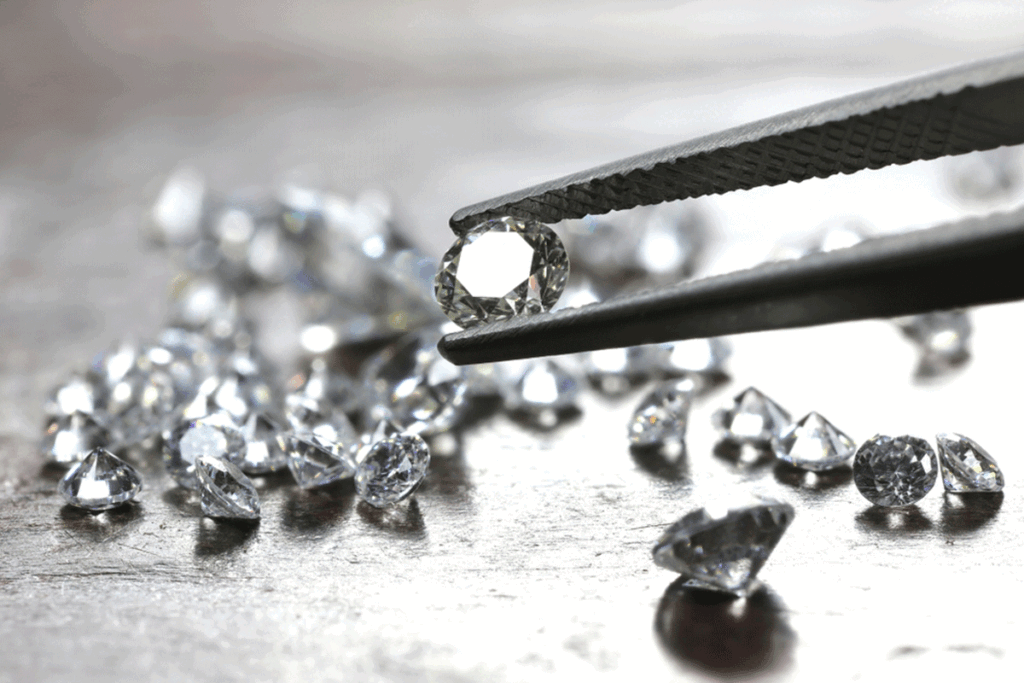Diamond clarity is one of GIA’s 4Cs—the universal method of assessing diamond quality. It is a qualitative measure of each diamond’s extent and type of inclusions and blemishes. The basics of diamond clarity dictates that the fewer the inclusions and blemishes, the better is a diamond’s clarity. Diamond clarity can have a significant impact on its price. Fortunately, many imperfections that affect a diamond’s clarity grade aren’t visible to the naked eye. These are what is called in the industry “eye-clean diamonds.”
Clarity, like diamond color, plays a major role in how a diamond will look. A diamond with visible inclusions and blemishes would look dull and dirty. Anything above that clarity grade and looks “clean” to the naked eye are eye-clean diamonds. Their sparkle and brilliance are just as good as higher-clarity grade diamonds, but cost much less.
So read on so you will know how to pick them out the next time you go out to buy diamonds or diamond jewelry pieces.
What are Eye-clean Diamonds
When it comes to diamond clarity, the major goal is one that is eye-clean. It means diamonds with no inclusions or blemishes visible to the naked eye. However, if you are going to buy a diamond in the VS1 (or higher) clarity grade, you need not worry about inclusions. Inclusions are only apparent on clarity grades VS2, SI1, or SI2, – if you are finicky about such things.
These clarity grades belong to the categories very slightly included and slightly included in the GIA’s grading system. And this is where your buying decision can spell a big difference in the overall health of your bank account because these inclusions and imperfections cannot be seen unless viewed under magnification (microscope or a jeweler’s eye loupe).
And that’s what all this eye-clean fuss is all about.
What is An Eye-clean Diamond?
Being “eye-clean” is the term used to describe a diamond with inclusions and imperfections that cannot be seen by the naked eye. And it is determined by viewing a stone at a distance of 6 to 12 inches from the eyes, 20/20 vision, under normal daylight conditions.
Knowing how to judge the eye-cleanness of a diamond can save you a lot. For example, the price difference between an IF (internally flawless diamond) and an SI1 (slightly i) is huge. Yet, no one can distinguish the difference between the two without any sort of magnification.
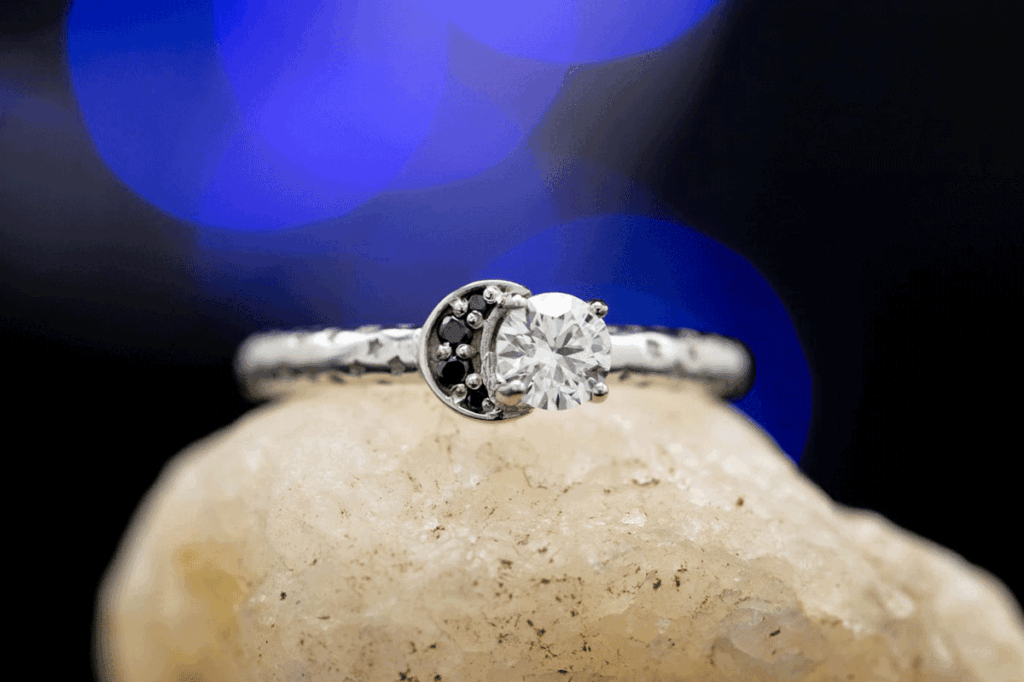
When you go out to buy an eye-clean diamond, examine it closely under HD photography or videography. If these are unavailable, examine them away from the jewelry shop’s bright lights. If possible, examine them under natural daylight.
Be aware, though, that there is no specific clarity grade that guarantees an eye-clean diamond. What this means is that while VS2 (very slightly included) is, in most cases, eye-clean, they may not always be. The same reasoning holds true for the question, “is a VS1 diamond eye clean?” Yes, it always is—no inclusions or blemish visible to the naked eye.
On the other side of the scale, “is S12 diamond eye-clean?” This diamond clarity grade can be eye-clean. But it is not so common.
Living with inclusions
In a perfect world, diamonds are supposed to be flawless. But the world is not perfect, so instead of focusing on perfection, settle for the degree of acceptability of their imperfections. That being said, accept them as long as your eyes cannot see them.
Settle for inclusions that are well spread out across the diamond. Inclusions that are transparent, or whitish in color.
Carefully check where they are located. The location of inclusion can affect a diamond in two ways – its visual appeal and durability.
Visual appeal
When people look into a diamond, the instinct is to look at the center. For this reason, inclusions directly under the table facet easily get picked out. spotted. Hence, avoid dark and large inclusions near the center of the diamond.
Durability
Inclusions can also affect the durability of a diamond.
For example, feather-like inclusions or cavities near the girdle will make a stone vulnerable to chipping. This is so crucial that geological labs like the GIA assign a lower clarity rating for diamonds with this kind of inclusion.
Yes, inclusions located along the girdle can be hidden by the prongs. But if the prong happens to be on top of that kind of inclusion, it will be subjected to a higher level of mechanical stress.
On the other hand, if a feather-like inclusion or a cavity is located in an unprotected area, sudden impact with a significant amount of force can result in catastrophic damage to such diamond. An improper bench technique during cutting or polishing can cause diamonds to chip break along the inclusion area.
Bear in mind that diamonds with durability risks are often priced at a discount. Buying them is at your own risk.
Carat weight and inclusions
During grading, carat weight is taken into account when assigning a clarity grade for a particular diamond. For example, SI2 inclusions in a 0.30-carat diamond are hardly visible to the naked eye.
However, if this particular inclusion – same size, shape, and location – is found in a 1-carat diamond, it will likely be graded VS2 or SI1 clarity grade instead. Hence, to be classified as eye-clean, a larger diamond must have a higher level of clarity grade.
As for the question “Is SI2 diamond eye clean?” It will be extremely difficult to find an eye-clean SI1 or Si2 diamond at 2 carats and above.
How to Find Eye-clean Diamonds
Finding an eye-clean diamond is not as difficult as finding one that suits your budget. But it can be done. Here’s how to do it (please refer to the chart as you go along):
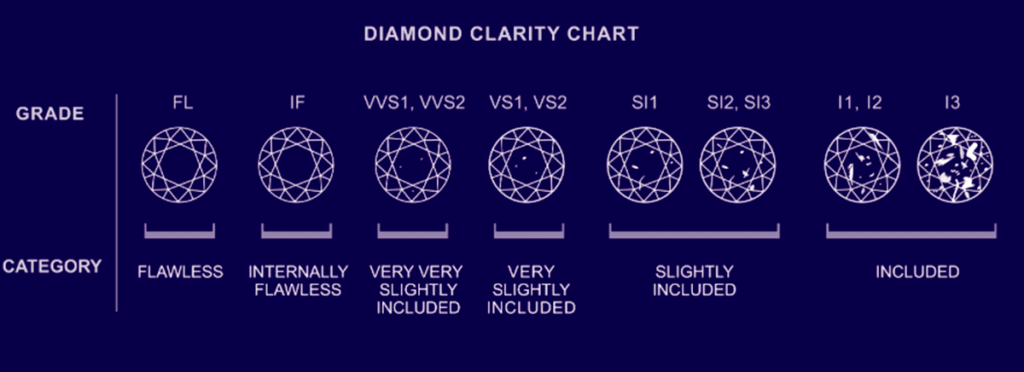
Check the certificate for its clarity grade
While this is a “must” it should not stop there if you want to be sure you get the right clarity at the price you can afford.
As a rough rule of thumb VS to SI, clarity grades give the best value for an eye-clean diamond. If you are buying a 3-carat stone, the VVS grade will be the best value for your money. You may go as high as a VVS.
On the other side of the spectrum, keep away from I1 to I3 diamond grades if you are buying 0.4 carats above. The inclusions and blemishes will show through like red flags.
Examine the diamond closely
Refutable vendors provide high-resolution images of diamonds in their inventory. allow you to examine a diamond – if you are shopping online. . Review the item or items you are inclined to buy. Zoom in on them if this function is available. Note where the inclusions are. But keep in mind that you can’t see them as a ring on your finger or hanging from your ears as earrings (like the ones in this Amazon review)
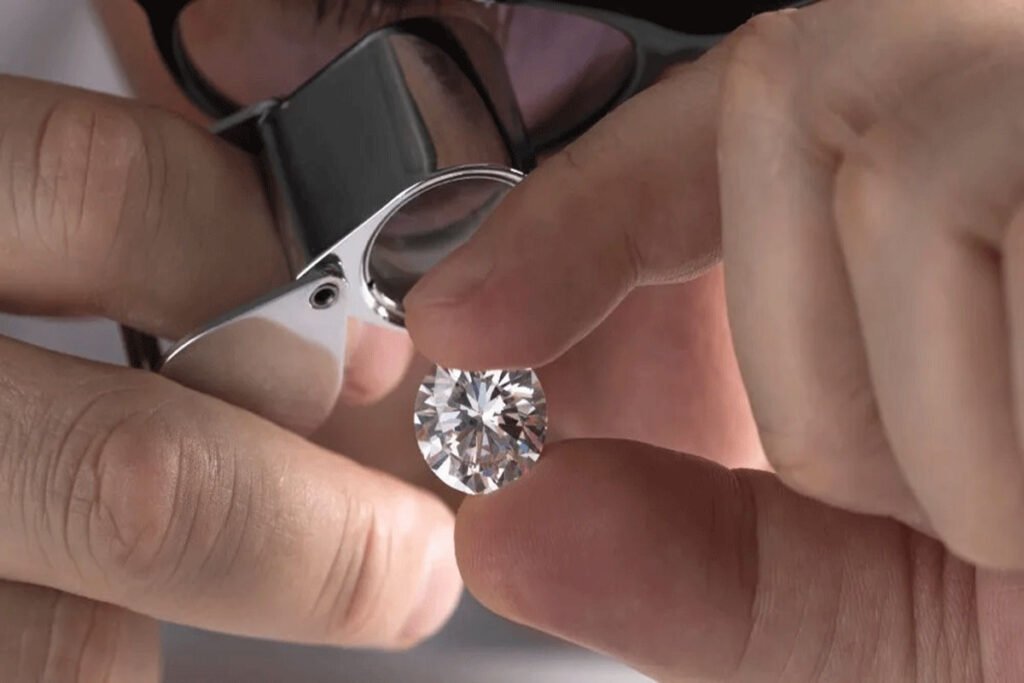
If you are shopping offline, review the item(s) in normal light -ideally daylight – and see if you notice any imperfections.
Take note of the location of the inclusions
The location of the inclusions will count a lot in making a diamond look eye-clean or not. For example, inclusion on the edge of the diamond can likely be hidden by the setting. But inclusion in the center of the diamond will stand out each time you look at the diamond.
Go for the lowest eye-clean grade
Unless you have the money to spend, don’t be suckered into buying high-clarity grade diamonds. They are always not worth the cost. As long as they are both eye-clean, a lower clarity grade diamond will look exactly the same as that of the higher clarity bracket. Just think of this: an eye-clean SI2 diamond costs 18% less than an eye-clean VS2. So, if you ask “Will a VS2 diamond be eye clean?”—the answer is a definite yes.
Get help
Evaluating a diamond’s clarity can be tough, especially if you have not done it before. In this case, put yourself on the safe side by seeking help from those who know. A friend or an experienced jeweler. Better still, reach out to a reputable jewelry store that employ experts on this thing.
Best Eye-clean Diamond Guide
Let’s say you are in the market for eye-clean diamonds but don’t know how or where to start. Lucky for you, here are a bunch of tips from The Diamond Pro to keep you in the right direction. Diamonds are expensive and it would be such a waste of money if you pay more for something that you can get for less—if only you knew.
Please do take note that diamond cut and carat weight play a crucial role in the eye-cleanliness of a stone.
So for…
Round and Princess cuts
For round and princess cut diamonds, VS2 and SI1 are almost always eye-clean for diamonds at 2 carats or less. In fact, even a round cut SIs can sometimes look eye-clean. But, will a VS@ diamond be eye-clean? Yes, if it is 1 carat or less.
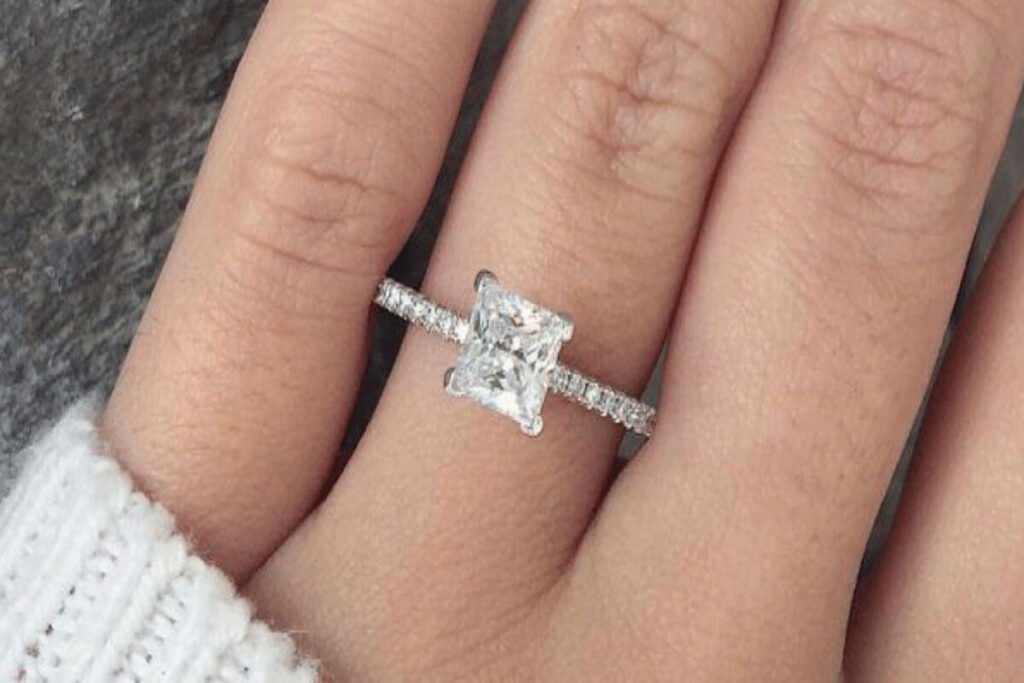
Take note that the bigger the diamond, the easier it is to see its imperfections and inclusions. So if you are buying a 3-carat VVS2 diamond, closely examine it for eye cleanness.
Cushion, Oval, Radiant, Marquise, and Pear-shaped cuts:
These cuts hide inclusions better than others, so an SI1 and SI2 will be eye-clean and offer the best value for your money. And if the question ” are all SI1 diamond eye clean?” hangs in your mind. The answer is “it depends on the cut.”
Heart-shaped diamonds
VS2 and SI1 heart-shaped diamonds are always eye-clean. In fact, if the shape is not an issue, then this offers the best value for your money. They hide inclusions and imperfections better than round and princess cuts.
Emerald, Asscher, and Baguette cuts
When buying any of these cuts (and emerald cut diamond like the one in this Natalie Diamonds review, for example), go for a VS2. Inclusions and imperfections are easier to detect in step-cut diamonds.
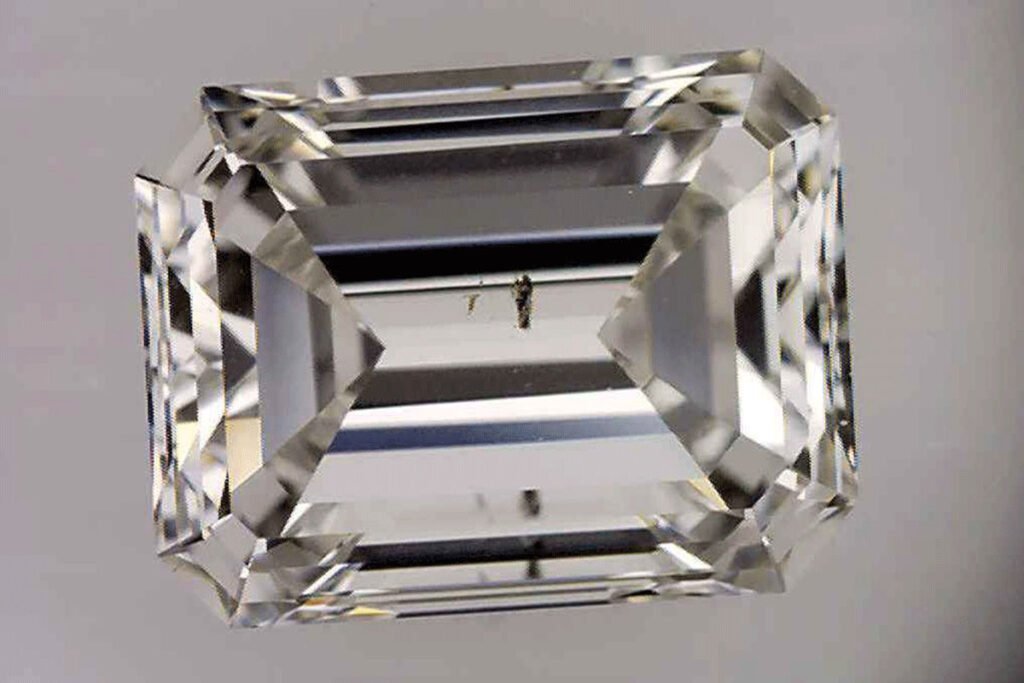
Additional Eye-clean Diamond Info
Evaluating eye-clean diamonds fall in the realm of expert jewelers or diamond experts. But there are ways you can find them and avoid bad ones, here are some things to remember:
- VS2 diamonds that are 1 carat or less are almost always eye-clean. Go for VS1 if you are buying a 2-carat stone or beyond.
- If you are toying with the idea of pitching eye clean vs not eye clean, consider this – I1 diamonds have obvious inclusions and imperfections. In fact, one is not worth buying if used as a center stone of an engagement ring. They affect the way light travels through the stone.
- Cluttered inclusions can make a diamond look cloudy, especially if coupled with a strong fluorescence.
- Eye-cleanness is sparsely discussed in colored or fancy diamonds. It means the “eye clean diamond color” thing is confined to the GIA’s D to Z color range.
Is an Eye-clean Diamond Worth Buying?
Compared to an I1, I2, and I3, yes, it is. But don’t get so fixated about it to make the cost decision on buying a VS1 or Vs2 when an SI1 or SI2 will just look as great.
The bottom line is that if you are going to buy an eye-clean diamond, choose one from the lowest clarity grade. On your finger, it would look like a flawless diamond but costs far less. That’s getting the best value out of your buck.
Is An Eye-clean Diamond for You?
Be practical. There are only five diamond clarity grades from SI2 to VVS1, yet the price difference is a whopping 100%. While an internally flawless diamond is a real treasure, there is no compelling and practical reason to get one—except maybe for an engagement ring.
But when you do, always strive to balance your requirements. Do bear in mind that clarity is often the attribute that you can compromise without any detrimental impact on the diamond’s appearance. So regardless of whether you have a huge budget or less, you have wide leeway as far as the eye-cleanness of the ring is concerned.
To put a rightful rest to the matter, ask yourself this question, “do I have to pay more for a diamond with a higher clarity grade when I can buy something with a lower clarity grade at a lower price and still get eye-clean?”
No one can answer this question but yourself. Fortunately, you may have the time to think it through very thoroughly.
If you want to know more about diamond clarity, check out our article “Lab-Grown Diamond Clarity: What to Look For.”

